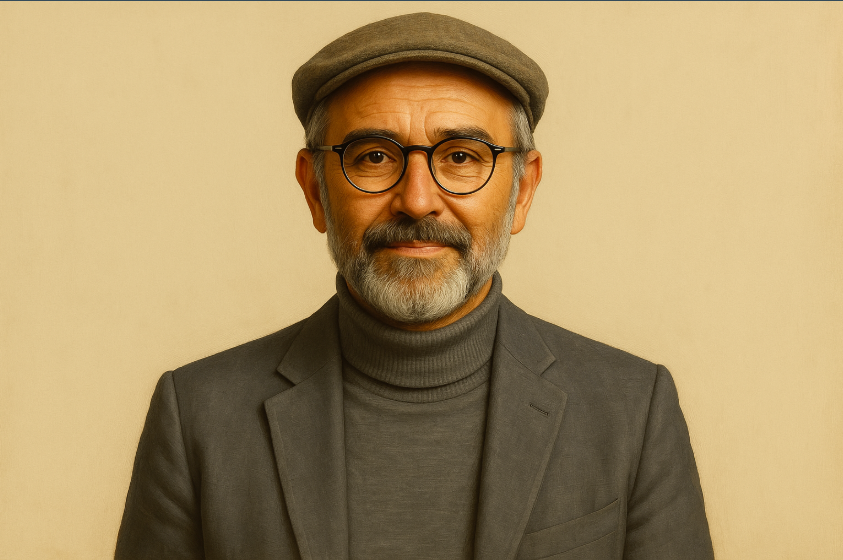
In the coastal town of Seferihisar, nestled along Turkey’s Aegean edge, a wandering goat has become a symbol of something quietly radical.
Its name is Seferi Keçi—literally, the Wandering Goat—and while the animal may suggest mischief or folklore, it instead marks a quiet media revolution. Started in 2017 as a small independent magazine about sustainability and social justice, Seferi Keçi has since grown into something far more ambitious: a living, breathing ecology of journalism, activism, and local solidarity.
“There’s a serious lack of independent reporting on ecological issues in Turkey,” says Baha Okar, journalist and co-founder of Seferi Keçi. “We wanted to be the voice of local environmental struggles. But more than that—we wanted to create a conversation with the community, not just tell stories.”
Seferi Keçi was born in a place often overlooked by national media. Seferihisar, a municipality of around 60,000, is known more for its citrus groves and summer tourists than its headlines. But that’s precisely what made it fertile ground. In a country where independent journalism increasingly battles for survival—and where rural voices are routinely silenced or simplified—Seferi Keçi chose to begin where the silence was loudest: the land.
In the story of Seferi Keçi, place is everything.
The project’s founding team chose to root their media experiment in a geography shaped by both agriculture and activism. “We’re half-local, half-national,” Baha says. “We wanted to focus on alternative life and production practices in rural areas, because that’s where the battle for sustainability is really happening.”
The media landscape in Turkey leaves little space for such nuance. Coverage of environmental or rural issues is often thin, framed by corporate interests or urban-centric narratives. Against that backdrop, Seferi Keçi took a different path: combining longform journalism, video storytelling, and in-person dialogue to explore the relationship between people, land, and power.
Initially launched as a quarterly print magazine, the project evolved into a full-spectrum cultural platform. Its stories range from agroecology to cooperative farming, from land rights to youth activism. Their YouTube interviews and short documentaries—some viewed over 140,000 times—are interwoven with fieldwork, workshops, and events hosted at what they now call the Culture House.
This Culture House isn’t just a venue. It’s a social experiment in itself—a hybrid space where journalism meets daily life. It includes a bookstore, café, and even a small grocery shop that sells only local produce sourced from small-scale farmers and cooperatives. “We support organic producers and offer natural foods to our community,” Baha explains. It’s not just about content—it’s about creating a living model.
In the hands of Seferi Keçi’s three-person team, journalism becomes something more tactile: a kind of civic infrastructure. Reporting is embedded in the rhythms of the town, and each article or event is an attempt to repair something that’s been broken—trust, attention, participation.
The team’s small size belies the scale of their ambition. They handle everything in-house: research, video editing, event planning, social media, design. Volunteers help with translation and logistics. But the core energy comes from within—sustained by the relationships they’ve cultivated over time with farmers, students, researchers, and activists.
What emerges is a form of journalism deeply entangled with its ecosystem. “We’re not here to extract stories,” Baha says. “We’re part of the same struggle.”
But independence has its price. Financial sustainability remains a constant challenge, especially for media platforms outside of major urban centers. “It’s very difficult to carry out cultural or civil society work with your own means in Turkey,” Baha explains. “Project-based funding is never enough.”
That’s why support from the European Endowment for Democracy has been critical. “This support allows us to create new channels to tell stories the public wouldn’t otherwise hear,” Baha says. It has helped Seferi Keçi strengthen its team, expand its multimedia work, and stay focused on the kind of journalism that can’t be found elsewhere.
There’s something paradoxical about Seferi Keçi’s success: the more local it becomes, the more relevant it feels. Its hyper-focus on one region—the Aegean—and on specific themes like land justice, biodiversity, and sustainable food systems, has given it a national resonance.
This year, the team is planning a new series of documentaries focusing on ecological resistance movements in Western Turkey. They also want to scale up their print magazine and increase youth-focused programming.
“Young people are already part of our community,” Baha says. “But we want to create even more space for them to participate, tell their stories, and imagine alternatives.”
The goal isn’t just to survive—it’s to evolve. The next phase includes growing the solidarity model that underpins their Culture House, deepening their ties with local producers, and making Seferihisar a beacon for others imagining independent media beyond the city.
In many ways, Seferi Keçi is a story about staying put. About building slow media in fast times. About working with the grain of the land instead of against it. In a country where journalism is often a risky vocation, the team’s stubborn optimism—like that of the goat they named themselves after—feels almost defiant.
“We’re motivated by the trust the local community has placed in us,” Baha says. “We’ve become part of this place. And that gives us strength.”
In the end, Seferi Keçi doesn’t just report on environmental resistance—it embodies it. Not with slogans or spectacle, but through steady, grounded presence. A print magazine. A documentary series. A grocery store. A community.
It’s not just media. It’s mutual care.
And maybe that’s what it takes to rebuild journalism from the ground up.
This article reflects the views of the grantees featured and does not necessarily represent the official opinion of the EED.